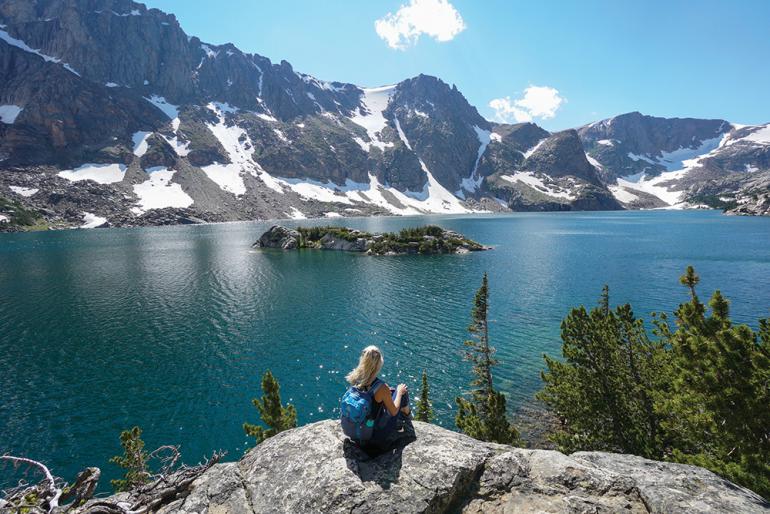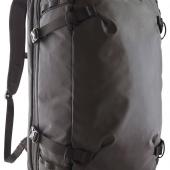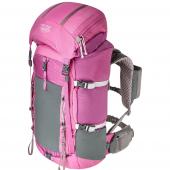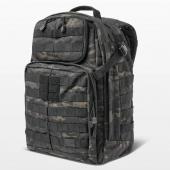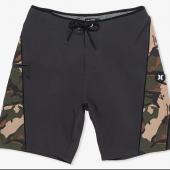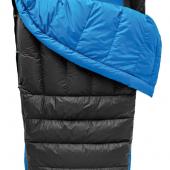How to Choose a Women's Pack
Men and women? Vive la difference! At least when it comes to backpacks, that is. Women’s shapes, carrying capacities, and centers of gravity are different than men’s, so their packs need to be, too. Our torsos are shorter, our hips are wider, and our shoulders are narrower. In fact, a well-made women’s pack will not even fit a man. Here are some tips for buying a women’s pack:
1. Check out the pedigree.
Some questions to consider: Is the company’s sole focus on women’s gear, or do they have only one or two models for women? Where are their packs sold? Gear buyers at women-specific outdoor stores are likely to be experts in the field of women’s packs, so if they buy them, chances are you can confidently do the same. Some companies to look at include Sherpani, Dana Design, Granite Gear, Osprey and Mystery Ranch.
2. Look into the pack’s design features.
Like a shoe, you won’t be able to see some of the more subtle features, but here are some more noticeable differences between men’s and women’s packs to look out for:
-Women’s packs should have a smaller distance between the shoulder straps.
-Women’s packs should have narrower, curvier shoulder straps to avoid digging into the body.
-The material on the shoulder straps might be softer to avoid chafing on women who hike in tank tops and sport bras.
-Since women’s backs are narrower and shorter than men’s, the back of the pack should be shorter and narrower, too. If the torso is too long, the shoulder straps won’t sit properly on your body, and there will be a gap between the pack and your back.
-The flare or “cant” of the waist belt is also important since a woman is typically curvier than a man. The waist belt needs to be a bit narrower since the space between a woman's ribs and her hips is less than on a man.
-Style! Women no longer have to settle for gray packs that look like they’re made for the military. For instance, Sherpani’s packs feature embroidered flowers and colorful print lining.
3. Choose the right pack for your needs.
-Size: For a hiking or climbing daypack, 2,500-3,500 cubic inches is about right—enough for water, equipment, a sweater, and lunch. For school and around town, you probably don’t need more than 2,500 cubic inches. For smaller loads, you might consider a lumbar pack. Weekend packs should be around 3,500-4,500 cubic inches, and for a week, you’ll be looking at 4,500-6,000 cubic inches.
-Fit: Find a pack that fits your torso. If it’s too short, the waist belt will ride around your waist, not your hips, which are supposed to carry the load. The yoke, or the place where the harness comes out of the pack, should sit about two inches below your C7 vertebrae (the one that sticks out of the base of your neck when you press your chin to your chest). The sternum strap should lie flat across your sternum.
-Features: Figure out what you need, whether it’s a bladder or water bottle holder, gear pockets, pen and calculator pockets, or climbing tool attachment points. Be careful not to get carried away—some of the cool-looking features and extra pockets can get caught on branches or cause you to spend too much time rifling around looking for your Chapstick.
-Suspension: For backpacking, you’ll want a pack with aluminum stays, which mold to your body’s shape. In addition, make sure the waist belt is sturdy enough to support heavy loads. For daypacks, a piece of webbing at the waist is fine to keep your pack from flopping around. A heavy waist belt on a small pack is awkward and adds unneeded weight.
Amy Fried is the former Director of Sales & Marketing at Boulder, CO-based Sherpani Alpina, maker of women-specific Urban, Technical, Professional, and Baby packs.
Trek to the Big Sky
The snow may be gone, but the scene at Big Sky remains full of fun. In the quest for that perfect combination of a good time and a good cause, look no further than the 11th Annual Trek to the Big Sky. Participants take a three mile hike to the top of Big Sky’s Gondola One, where a picnic and live music will satisfy and entertain. The event is put on by Bozeman-based Reach, Inc., a local organization devoted entirely to helping people with disabilities ranging from developmental deficiencies to trauma-induced brain injuries. Since its beginning in 1974, the organization has grown to provide for over 100 disabled Gallatin Valley residents.
“All the proceeds from the Trek to the Big Sky go to people with disabilities in the Gallatin Valley,” says Jay Winchester, Reach’s Community Relations and Development Director. “It’s our major fundraising event for the year.”
Trek to the Big Sky takes place on Saturday, July 23rd. Registration is 10:00-10:30 am at Big Sky’s Mountain Mall. The $15 fee lands you a Trek water bottle as well as the picnic and music. Following the festivities, the gondola will return participants to the base area. Those unable to hike can ride the gondola both ways. Contact Reach at 406-587-1271 for more information and pre-registration/pledge details.
-Ryan Minton
Granite Gear — Two Harbors, MN
Nimbus Latitude Pack – $230
www.granitegear.com
218-834-6157
The Nimbus Latitude pack, at 3.5 pounds and 3,800 cubic inches, is on the smaller end of Granite Gear's line. It has an initially weird, but then very cool panel-loading feature, which lets you get at your stuff from the side or the top. Internal compression straps keep things in while you search. Another cool feature is the bladder sleeve and built-in hole for the tube.
Oddly, near the bottom, an external Durastretch strip overlaps with but is not connected to the interior of the pack, leaving a sort of "hole." Although it would take a lot of manipulation to move contents from the inside to the outside of the pack, this is still unnerving.
Granite Gear's focus is weight, hence the absence of bells and whistles—other than two external Durastretch side pockets and a detachable internal stuff sack, what you see is what you get. The pack fabric is a combination of silicone and urethane, providing high tensile strength. The strap adjustment system is straightforward, but if you want to tweak the torso length or change the hip belt, you need a screwdriver. The pack has a thermoplastic Tepex framesheet for more flexibility. But oh, the foam back panel! It molded and breathed splendidly. I hiked a few hours with 22 pounds on and my back never felt so good.
-Tina Orem


